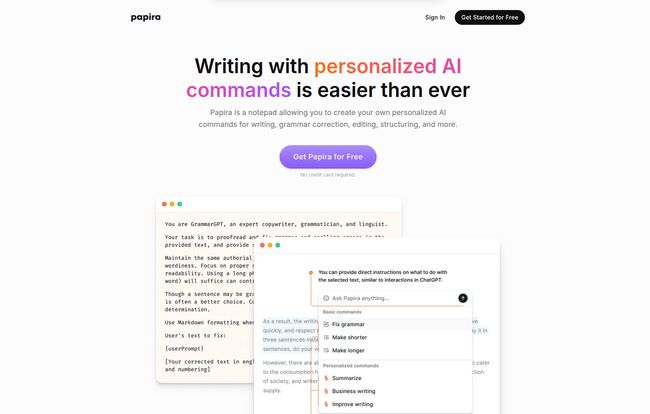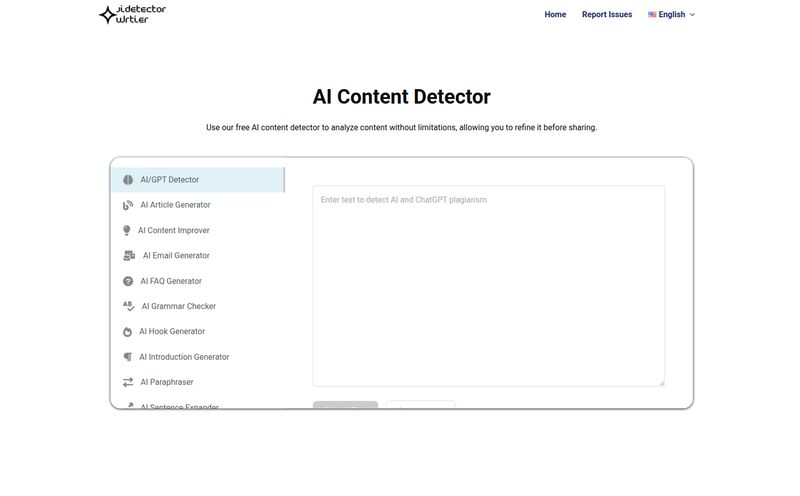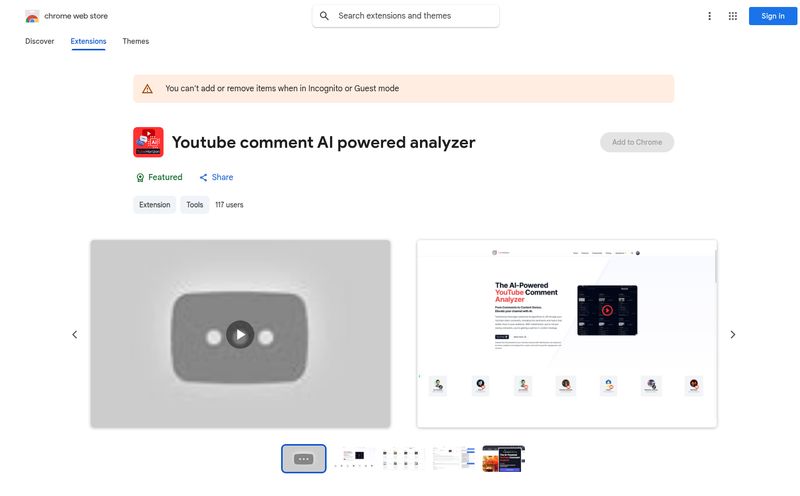The AI content gold rush has been… a mixed bag. As an SEO who’s been in the trenches for years, I've seen it all. First, it was the excitement. The promise of endless content, blog posts written in seconds, and the end of the dreaded blank page. Then came the reality: a tsunami of generic, soulless text that all sounds the same. You know the stuff. It reads like a robot wrote it because, well, a robot wrote it.
I’ve tested more AI writers than I can count. Some are okay for brainstorming, others are decent for churning out basic descriptions. But for creating content that has a real voice, that connects with a human audience? The struggle has been real. I was about ready to write off the whole category as a source of “first drafts only” until I stumbled upon a tool that took a different approach. It’s called Papira, and it’s less of a content-generating machine and more of a personal writing assistant that you get to train.
So, What on Earth is Papira Anyway?
Think of it this way. Most AI tools are like a giant, public library. You can ask the librarian (the AI) for a book on a topic, and it will give you a pretty standard, generic text. Papira, on the other hand, is like your own personal study, filled with your notes, your favorite reference books, and an assistant who knows exactly how you like your coffee—and your paragraphs structured.
At its core, Papira is an AI-powered notepad. But the secret sauce, the thing that made me sit up and pay attention, is its focus on personalized AI commands. Instead of using a one-size-fits-all prompt, you create your own reusable commands to do exactly what you need. It’s a subtle shift, but it changes everything. You’re not just asking for content; you’re building a system to automate your unique writing workflow.
The Real Magic is in the Commands
This is where Papira really distinguishes itself from the sea of ChatGPT wrappers. You can create a command for literally any repetitive writing task you have. I’m talking about building your own personal toolkit, tailored to your exact needs.
For example, as an SEO blogger, I could create commands like:
- "Blog Post Intro Hook": A command that takes a title and target keyword and generates three different opening hooks in my specific, slightly cynical tone.
- "Simplify This Paragraph": A command that rewrites a dense, jargon-filled paragraph into something a 5th grader could understand, perfect for improving readability scores.
- "Generate Meta Description": A command that crafts a compelling, under-160-character meta description based on a piece of text, making sure to include the main keyword.
You build the command once, giving it detailed instructions, and then you can run it with a single click forever. It’s like having a junior writer who you only had to train once and who never asks for a day off. This level of customization is something I’ve been craving.

Visit Papira
Digging into the Features That Actually Matter
Beyond the command system, a few other things stood out to me as genuinely useful, not just marketing fluff.
Access to the AI 'A-Team'
Papira doesn't lock you into a single, proprietary AI model. It gives you access to the big guns: OpenAI's GPT models, Anthropic's Claude, and Perplexity. Anyone who's spent time with these knows they have different strengths. I find Claude models are often more creative and produce more flowing, natural prose, while GPT-4 is an analytical powerhouse. Having the choice to pick the right tool for the job within the same interface is a massive plus. You're not just getting one AI, you're getting a panel of experts.
A Command Library So You're Not Starting Blind
The idea of building your own commands might sound daunting at first. I get it. Who has the time? Thankfully, Papira comes with a library of ready-to-use command templates. You can just grab one that looks useful—like “Summarize,” “Improve Writing,” or “Fix Grammar”—and use it immediately. Or, even better, you can clone it and then tweak the instructions to better fit your style. This makes the learning curve way less steep.
It's a Genuinely Good Writing App
Let's not forget the "notepad" part. The interface is clean, supports Markdown (a must for me), and lets you export your work directly to a DOCX file. It’s a simple, distraction-free environment where you can actually get work done. It’s not trying to be a project management suite or a social network. It's a place to write, and I appreciate that focus.
What I Really Think After Kicking the Tires
Okay, so after playing around with it for a while, I've got some thoughts. The biggest win, hands down, is the feeling of control. I created a command to rewrite passive voice sentences into active ones and another to generate a list of LSI keywords from a block of text. It took me maybe 10 minutes to set up, and now it saves me time on every single article. That's a huge ROI.
However, it’s not a magic wand. You have to put in a little bit of upfront effort. The free plan is generous, giving you 50,000 tokens (that’s about 2,000 generated words, give or take), which is plenty to figure out if it works for you. But if you're a serious writer, you'll likely hit that limit. Also, the quality of your output is directly tied to the quality of the commands you create. A lazy command will give you lazy results. You have to think like a manager giving clear instructions to an employee.
Let's Talk Money: Papira's Pricing
The pricing structure is refreshingly simple, which is a nice change from some of the confusing, credit-based systems out there.
| Plan | Price | Key Features |
|---|---|---|
| Free | $0 / month | 50k tokens per month, access to all AI models, personalized commands. Free forever. |
| Pro | $15 / month | Unlimited tokens, all AI models, personalized commands, cancel anytime. |
My take? The Free plan is a no-brainer for trying it out. For serious bloggers, content creators, or marketers, the $15/month Pro plan is incredibly reasonable. Considering the time saved and the quality of the AI models you get access to, it's a steal compared to many other tools on the market.
Frequently Asked Questions About Papira
Is Papira just another fancy front-end for ChatGPT?
Not really. While it uses OpenAI's models, its core value is the personalized command system and the notepad-style workflow. It's designed specifically for writers to create repeatable, customized tasks, which is a very different experience than a conversational chatbot.
How many words can I actually generate on the free plan?
The 50,000 token limit roughly translates to about 2,000 generated words per month. This can vary based on the complexity of your commands, but it's a good estimate. It's enough to automate parts of a few articles or handle your social media posts for the month.
Can it really create "humanized" content?
Yes, but with a caveat. The "humanization" comes from you. By creating commands that specify your unique tone, style, and perspective, you guide the AI to produce content that sounds much more like you and less like a generic robot. The tool facilitates it, but your input is the key ingredient.
Is it difficult to create my own AI commands?
There's a slight learning curve, but it's not rocket science. If you can write a clear email with instructions to a colleague, you can write a Papira command. Starting by cloning and modifying existing commands from the library is the easiest way to learn.
What AI models does Papira use?
Papira integrates premium models from three of the top AI labs: Anthropic (the makers of Claude), OpenAI (the makers of ChatGPT), and Perplexity. This gives you a fantastic range of options to choose from for any given task.
So, Is Papira Worth It?
For the writer who is tired of generic AI output and wants to build a more efficient, personalized workflow, I’ve gotta say, Papira is absolutely worth a look. It's not for someone who wants to press a single button and have a perfect 2,000-word article appear. It's for the craftsperson. The writer, the marketer, the blogger who wants better tools, not just a shortcut.
It puts the control back in your hands, allowing you to blend the power of AI with your own unique voice and expertise. And in an internet that's getting noisier and more generic by the day, that might just be the most valuable feature of all.



